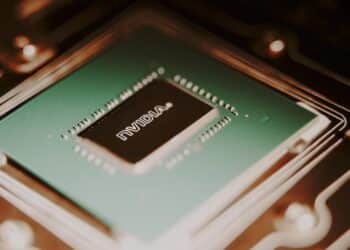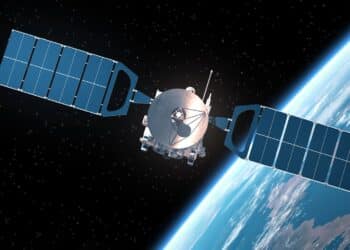Technology
Our Technology section delivers concise, investigative reporting on the hardware and software innovations driving the digital era—from flagship device launches and major platform rollouts to antitrust and patent disputes shaping market dynamics. We also cover frontier aerospace and space-exploration developments, including NASA missions, deep-space telescope discoveries, and planetary science breakthroughs. Stay informed on the strategic moves, regulatory shifts, and breakthrough technologies defining tomorrow’s landscape.
Valve announces three new hardware products slated for 2026 release
The American technology company, Valve, has just announced three new hardware devices, scheduled to arrive on the market in 2026....
Read moreDetailsU.S. to issue $1 commemorative coin honoring Steve Jobs in 2026
The United States plans to release a commemorative $1 coin honoring Steve Jobs, one of the biggest names in modern...
Read moreDetailsSnap plans 2026 debut of smart glasses aimed at competing with Meta’s wearable tech
Seeking to increase competition with its main rivals, including Meta, Snap is preparing to launch a new generation of smart...
Read moreDetailsTSMC to begin mass production of A16 chips in late 2026
Recent news in the tech world has shaken the global market: TSMC has just confirmed that it will begin mass...
Read moreDetailsApple developing touchscreen OLED MacBook Pro slated for 2026 release
After years of speculation in the tech world, Apple has decided to take a bold step towards the future: the...
Read moreDetailsHonor prepares 2026 launch of its first AI-driven “robot phone” aimed at enhanced user interaction
In 2026, Honor Mobile is set to release the "First AI Robot Phone". The device will perform the functionalities of...
Read moreDetailsAmazon to launch new Kindle Scribe Colorsoft e-readers in early December 2025
The Kindle family will now include color e-paper for the first time, the Kindle Scribe Colorsoft will be Amazon's premium...
Read moreDetailsPebble unveils Index 01 smart ring with voice assistant and long-life battery
Pebble has launched the Index 01, the first smart ring whose sole purpose is not fitness tracking, but rather audio...
Read moreDetailsAstell & Kern to introduce HC5 DAC and Stella IEMs as part of its 2026 premium audio lineup
Astell & Kern is enhancing its already prestigious reputation in high-end portable audio once again with the HC5 USB DAC...
Read moreDetailsOnePlus Pad Go 2 set to hit the market on December 18, 2025
OnePlus is likely to announce its new OnePlus Pad Go 2 tablet on December 17, 2025, and it will go...
Read moreDetailsNew Amazfit smartwatch appears nearing launch as certifications point to a 2025–2026 release window
If you have been following Amazfit products, you know they have been coming out with a lot of new products...
Read moreDetailsOnePlus to launch the Snapdragon 8 Gen 5–powered 15R on December 17, 2025
OnePlus is preparing to release more new products before the year's end. The OnePlus 15R, OnePlus Pad Go 2, and...
Read moreDetailsOoredoo teams up with GSMA to expand digital-skills training across 5G, IoT and cybersecurity
It's no secret that the technology sector is constantly changing, and new concepts for technological innovation are emerging in various...
Read moreDetailsOnePlus confirms December 17, 2025 release date for its new 15R smartphone
OnePlus has recently confirmed the launch date for the OnePlus 15R smartphone to be December 17, 2025. Due to the...
Read moreDetailsNothing to debut the Phone (3a) Community Edition, a new budget-to-midrange Android device, in early December
Following their tradition of collaborative releases, Nothing is launching their new Phone (3a CE), created in partnership with Nothing’s fans,...
Read moreDetailsSamsung releases its first tri-fold smartphone, the Galaxy Z TriFold
Samsung has officially shown the Galaxy Z TriFold for the first time. It is a smartphone unlike anything else. It...
Read moreDetailsOnePlus to unveil the 15R, Pad Go 2 and Watch Lite on December 17, 2025
Tech fans will be happy to celebrate this holiday season as OnePlus has announced the OnePlus 15R, OnePlus Pad Go...
Read moreDetailsSamsung’s Galaxy Z TriFold set to become the first tri-fold smartphone when sales begin on December 12, 2025
Samsung is the first in the industry to create the world's first tri-fold smartphone, the Samsung Galaxy Z TriFold, which...
Read moreDetailsAlibaba introduces Quark AI smart glasses as everyday wearable assistant
Alibaba has decided to enter the smart wearables market and has just unveiled its new product, the Quark AI glasses....
Read moreDetailsNew Zoho report shows AI adoption surpassing 90% among Indian enterprises
Some Indian companies have adopted artificial intelligence technology, and this is no longer a distant trend; it has become an...
Read moreDetailsMumbai’s data-center boom increases reliance on coal power, prompting environmental backlash
Mumbai has experienced rapid growth in its data centers, which are emerging as giant systems responsible for powering the digital...
Read moreDetailsNokia outlines sweeping overhaul to reposition its networks for an AI-driven era
Nokia once again shown us how it has redefined its way of doing business by using technology, innovation, and networks...
Read moreDetailsAmazon and Google launch joint multicloud networking platform to improve speed and reliability of cloud connections
Multicloud Networking has never been as present in the daily lives of companies as it is today, and at the...
Read moreDetailsConnecticut allocates $121 million to accelerate development of statewide quantum technologies
The State of Connecticut is investing $121 million to pioneer quantum technology efforts. Governor Ned Lamont remarked that the investment...
Read moreDetailsFujitsu unveils new multi-agent AI system designed to overhaul global supply-chain operations
Fujitsu has just released a new technology: based on multiple AI agents capable of collaborating securely and quickly. This represents...
Read moreDetailsGlobal lenders weigh support for a $38 billion data-center buildout powering OpenAI’s next infrastructure phase
Artificial intelligence is increasingly gaining ground in large-scale disputes and investments. Global banks are discussing lending US$38 billion to finance...
Read moreDetailsUK unveils £137 million ‘AI for Science’ initiative to boost domestic AI-hardware and research startups
The United Kingdom has just taken an important step in the global race for artificial intelligence, with a new strategy...
Read moreDetailsAmazon announces $50 billion supercomputing and AI-cloud platform tailored for government agencies
Amazon has announced a multi-billion-dollar investment related to the use of technology for government purposes. The estimated investment is up...
Read moreDetailsNokia outlines sweeping strategy shift as it pivots toward AI-driven network architectures
Nokia has announced a shift in its global strategy, marking a new beginning for the company in the race for...
Read moreDetailsNothing to release its first entry-level smartphone, the Phone (3a) Lite, later this month
Nothing has just taken an important step with the launch of its first entry-level smartphone, part of its main brand,...
Read moreDetailsAmazon commits $15 billion to expand AI-driven data center capacity across Indiana
Amazon has just announced a billion-dollar investment to expand its data center located in Indiana. This investment is considered one...
Read moreDetailsConnecticut directs $121 million toward expanding its statewide quantum tech ecosystem
The Connecticut state government is investing heavily in the technological future and has announced a significant investment of US$121 million...
Read moreDetailsNVIDIA chief pledges full support for accelerating AI growth, rejects concerns of a market bubble
NVIDIA's leadership made public statements aimed at reinforcing the brand's commitment to investing in the advancement of artificial intelligence, while...
Read moreDetailsMibro introduces Kids Watch Phone S1 aimed at safer, smarter communication for children
The company Mibro has just launched its new product, the Kids Watch Phone S1. At a time when many families...
Read moreDetailsLumia 2 debuts ultra-mini smart earrings capable of tracking real-time cranial blood flow
The company Lumia is launching a revolutionary product in the technology market: a new smart earring that promises to change...
Read moreDetailsEven Realities debuts Even G2 smart glasses featuring AI tools without onboard cameras
Even Realities has just launched its newest line of smart glasses, called the Even G2, which comes to market as...
Read moreDetailsEurope advances satellite communications with rollout of next-generation phased-array antennas
A silent revolution is underway in European space communications. Europe is deploying phased-array antennas, aiming to transform how satellites communicate...
Read moreDetailsStartups race to roll out AI-driven wearables as voice-based interfaces rapidly advance
The race to develop new technologies that appeal to the public has generated a high level of competitiveness among startups,...
Read moreDetailsApple introduces iPhone Pocket like “a beautiful way to wear and carry iPhone”
Apple has just made an announcement that surprised the public. The brand unveiled the iPhone Pocket, an accessory that blends...
Read moreDetailsOnePlus confirms global launch date for 15 series, unveiling new colors and upgraded cameras
OnePlus has officially launched its new series, the OnePlus 15, globally, marking the beginning of a new phase for its...
Read moreDetailsHonor debuts AI-powered Magic8 flagship lineup in China
HONOR officially unveiled its new flagship smartphone line, the Magic8 series, at an event held in China. The devices are...
Read moreDetailsAnalog Devices unveils CodeFusion Studio 2.0 to speed up embedded AI innovation
Analog Devices (ADI) has just announced the release of CodeFusion Studio 2.0, its new platform designed to accelerate and simplify...
Read moreDetailsOpenAI inks $38 billion cloud partnership with Amazon Web Services to expand AI infrastructure
OpenAI announced a $38 billion deal with Amazon Web Services (AWS), marking a major undertaking for both companies, with the...
Read moreDetailsBrazil showcases national quantum strategy as it builds momentum in emerging tech sector
Brazil is launching a new national strategy to occupy a new space in the global technological innovation landscape. The country...
Read moreDetailsSateliot launches Europe’s first 5G satellite development hub in Barcelona
Barcelona has just launched a pioneering initiative in continental Europe focused on communication through space innovation. Sateliot, a Catalan telecommunications...
Read moreDetailsNVIDIA CEO reports surging demand for Blackwell chips as wafer orders hit new highs
The chip market was buzzing this week, and Nvidia was the central focus. During an event in Taiwan, Jensen Huang,...
Read moreDetailsVodafone and AST SpaceMobile partner to develop Europe’s first satellite-to-phone network
Vodafone and AST SpaceMobile have just closed a partnership and together plan to launch the first European direct-to-smartphone satellite network....
Read moreDetailsESA launches Sentinel-1D radar satellite, finalizing first-generation Earth observation network
The European Space Agency (ESA) has launched Sentinel-1D, the latest satellite in the first generation of one of the world's...
Read moreDetailsNvidia joins India’s Deep Tech Alliance as new members commit $850 million in funding
A new partnership is emerging in the job market. Nvidia has just joined forces with the India Deep Tech Alliance,...
Read moreDetailsSamsung to roll out Galaxy XR headset in U.S. stores starting October 21
With its new release, Samsung has just redefined what we understand by mixed reality. Since October 21st, the highly anticipated...
Read moreDetails


















































